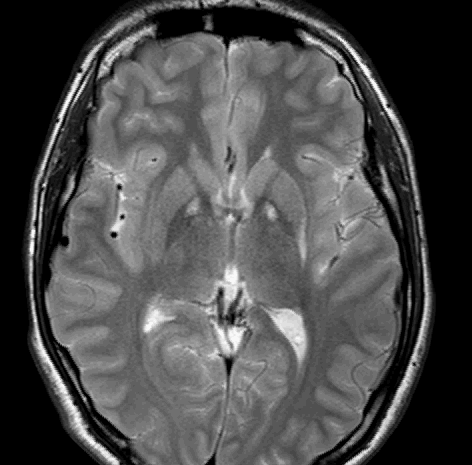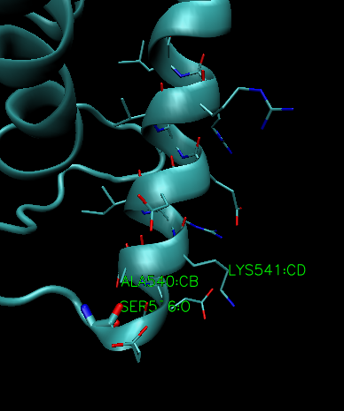Session Information
Date: Monday, September 23, 2019
Session Title: Genetics
Session Time: 1:45pm-3:15pm
Location: Les Muses Terrace, Level 3
Objective: Identify by exome sequencing (ES) the underlying etiology of spastic ataxia and pseudo eye-of-the-tiger sign (EOT) in 4 siblings.
Background: The EOT is a neuroradiologic feature due to excessive iron accumulation in the globus pallidus (GP). It is considered pathognomonic of pantothenate kinase associated neurodegeneration (PKAN). Pseudo EOT had been described in a few different disorders.The m-AAA is a proteolytic complex located in the inner mitochondrial membrane. Two isoforms exists: homo-and hetero-oligomeric forms composed of AFG3L2 AFG3L2/paraplegin subunits, respectively. Therefore, at least one normal allele of AFG3L2 is required for paraplegin to function properly. Mutations in the m-AAA AFG3L2 subunits and paraplegin are associated with autosomal dominant spinocerebellar ataxia (SCA28) and autosomal recessive hereditary spastic paraplegia (SPG7), respectively. Homozygous mutations in AFG3L2 affects both isoforms and manifest as spastic ataxia with progressive myoclonic epilepsy (PME).
Method: A 27 year-old patient presented with slowly progressive gait disturbance since the age of 8 years. He is the oldest of 9 siblings; paternal consanguinity was denied. Physical examination revealed cerebellar ataxia and pyramidal signs. Brain MRI revealed pseudo EOT sign on T2-weighted images (iron accumulation was absent on gradient-echo and SWI). Three brothers had similar clinical and neuroradiological findings. We used targeted next generation sequencing in the index case and verified candidate genes on other family members.
Results: We performed ES in the proband and found a heterozygous novel stop-gained and a missense variant in AFG3L2 gene. They are predicted to produce a premature stop codon and a missense change, respectively. We infer a pathogenic and likely pathogenic classification of the variants. Sanger sequencing confirmed the presence of both variants in all the affected members. The parents and 3 siblings were asymptomatic carriers.
Conclusion: ES enable us to identify an heterozygous compound novel mutation in AFG3L2 gene in 4 siblings with spastic ataxia and pseudo EOT. Neither of our patients presented PME. Our 4 cases expand the phenotypic spectrum of m-AAA related neurodegeneration. Long term follow-up is necessary to determine if the heterozygous members of the family will develop SCA28 phenotype or not.
To cite this abstract in AMA style:
G. Buda, S. Vishnopolska, J. Oliveri, F. Olivieri, G. Biagioli, L. Miquelini, A. Pellene, M. Marti, C. Calandra. Spastic ataxia and pseudo eye-of-the-tiger sign in a familiy with a novel compound heterozygous AFG3L2 mutations [abstract]. Mov Disord. 2019; 34 (suppl 2). https://www.mdsabstracts.org/abstract/spastic-ataxia-and-pseudo-eye-of-the-tiger-sign-in-a-familiy-with-a-novel-compound-heterozygous-afg3l2-mutations/. Accessed April 2, 2025.« Back to 2019 International Congress
MDS Abstracts - https://www.mdsabstracts.org/abstract/spastic-ataxia-and-pseudo-eye-of-the-tiger-sign-in-a-familiy-with-a-novel-compound-heterozygous-afg3l2-mutations/


